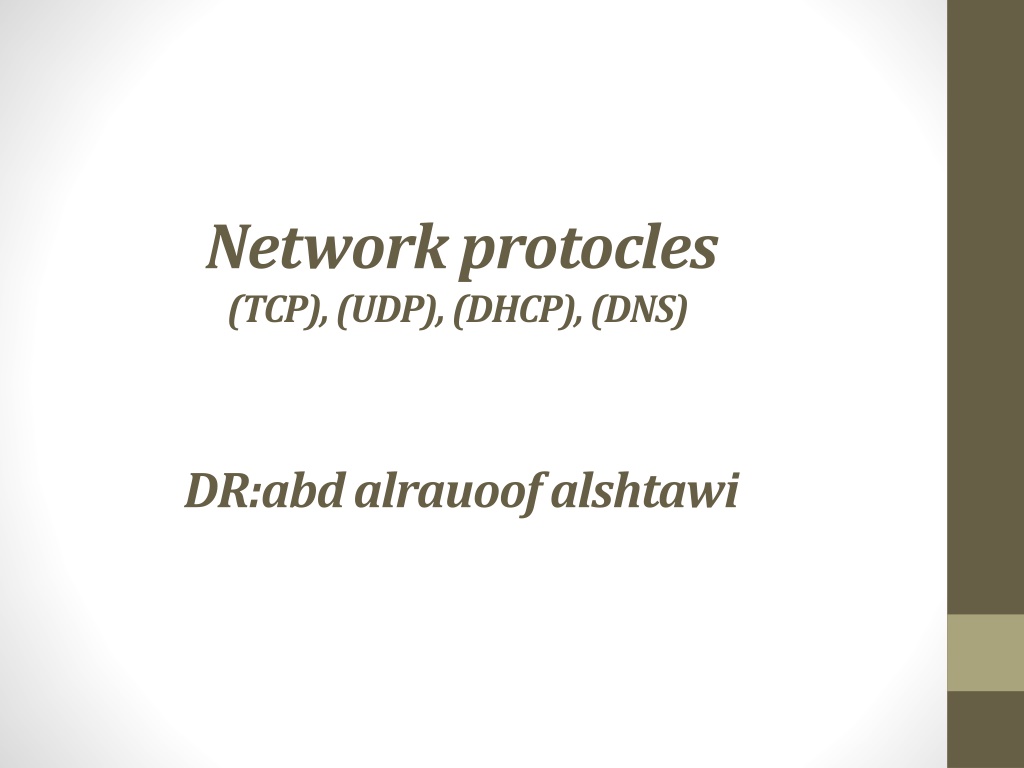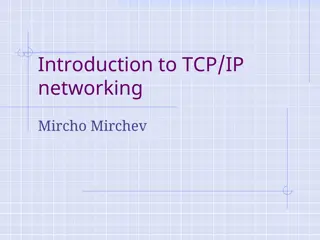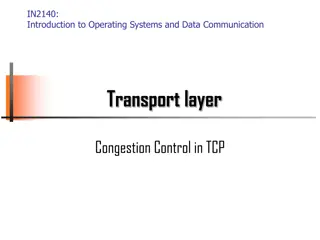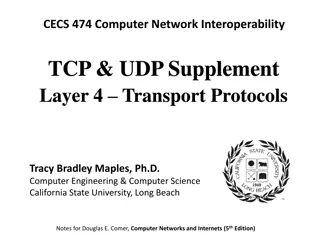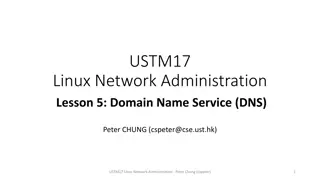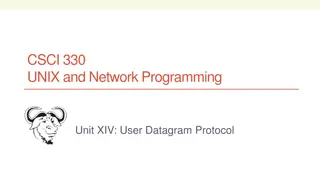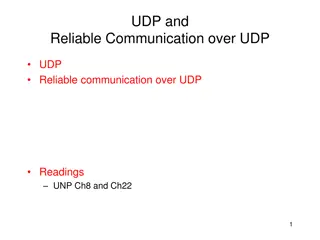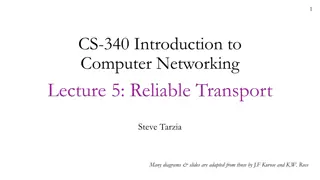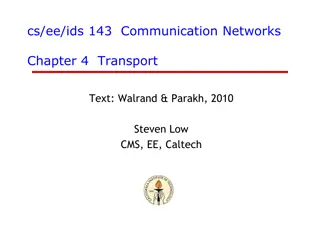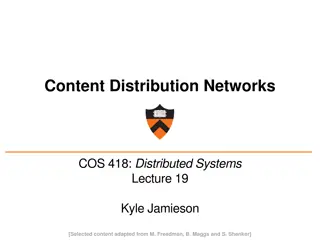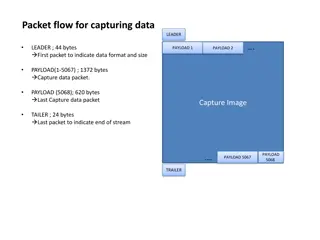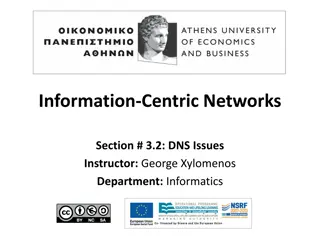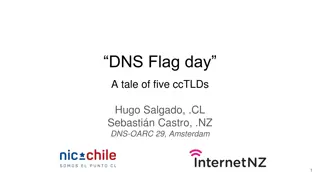Understanding Network Protocols: TCP, UDP, DHCP, DNS
Explore the fundamentals of key network protocols including TCP, UDP, DHCP, and DNS. Learn about IPv4 and IPv6 addresses, IP address classes, and the roles of these protocols in the TCP/IP suite. Understand the differences between TCP and UDP in terms of connection setup and reliability. Discover the function of DHCP in dynamically assigning network configuration parameters. Enhance your knowledge of the transport layer and how TCP/IP serves as the basic communication language of the Internet.
Download Presentation

Please find below an Image/Link to download the presentation.
The content on the website is provided AS IS for your information and personal use only. It may not be sold, licensed, or shared on other websites without obtaining consent from the author. Download presentation by click this link. If you encounter any issues during the download, it is possible that the publisher has removed the file from their server.
E N D
Presentation Transcript
Network protocles (TCP), (UDP), (DHCP),(DNS) DR:abd alrauoof alshtawi
IPv4: IPv4 address is a 32-bit address that uniquely and universally defines the connection of a device IPv4 address is 32 bits long. The IPv4 addresses are unique and universal. The address space of IPv4 is 232or 4,294,967,296 IPv6 address is 128 bits long
Abbreviated IPv6 addresses : IPv6 address is 128 bits long:
IP Address Classes Default subnet mask Class Start End 0.0.0.0 127.255.255.255 255.0.0.0 Class A 128.0.0.0 191.255.255.255 255.255.0.0 Class B 192.0.0.0 223.255.255.255 255.255.255.0 Class C 224.0.0.0 239.255.255.255 Class D 240.0.0.0 255.255.255.255 Class E
Transport Layer TCP/IP (Transmission Control Protocol/Internet Protocol) is the basic communication language or protocol of the Internet. It can also be used as a communications protocol in a private network TCP is a connection-oriented protocol; it creates a virtual connection between two TCPs to send data. In addition, TCP uses flow and error control mechanisms at the transport level.
Transport Layer The User Datagram Protocol (UDP) is called a connectionless, unreliable transport protocol. It does not add anything to the services of IP except to provide process-to-process communication instead of host-to-host communication. UDP runs on top of IP networks. Unlike TCP/IP, UDP/IP provides very few error recovery services, offering instead a direct way to send and receive datagrams over an IP network. It's used primarily for broadcasting messages over a network
DHCP The Dynamic Host Configuration Protocol (DHCP) is a standardized network protocol used on internet protocol (IP) networks for dynamically distributing network configuration parameters, such as ip addresses for interfaces and services Why use DHCP? Every device on a TCP/IP-based network must have a unique unicast IP address to access the network and its resources. Without DHCP, IP addresses for new computers or computers that are moved from one subnet to another must be configured manually; IP addresses for computers that are removed from the network must be manually reclaimed
Domain Name System (DNS) The Domain Name System is a distributed database with hierarchal structure and serve the basis for name resolution process in TCP/IP network (DNS) converts the name of a Web site (www.vipul.com) to an IP address (65.115.71.34) and vice-versa. This IP is the IP address of a Web site's server, not the Web site's name, and is used in routing traffic over the Internet.
Students name : Loai abdulhamid 201020035) ) Ala a bakhet al-Abadi(201120320) Haytham khaled al-Hamayel(201211394)
